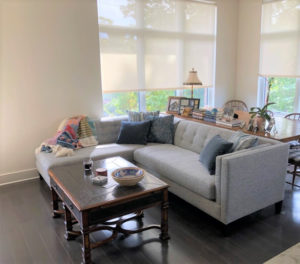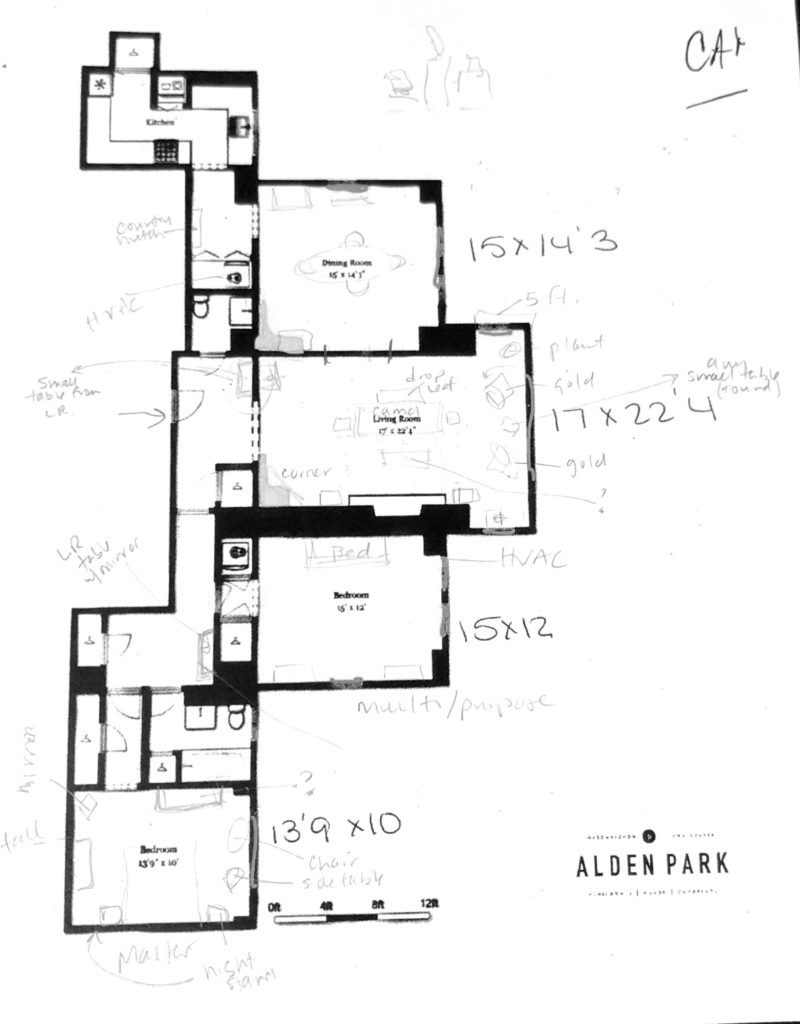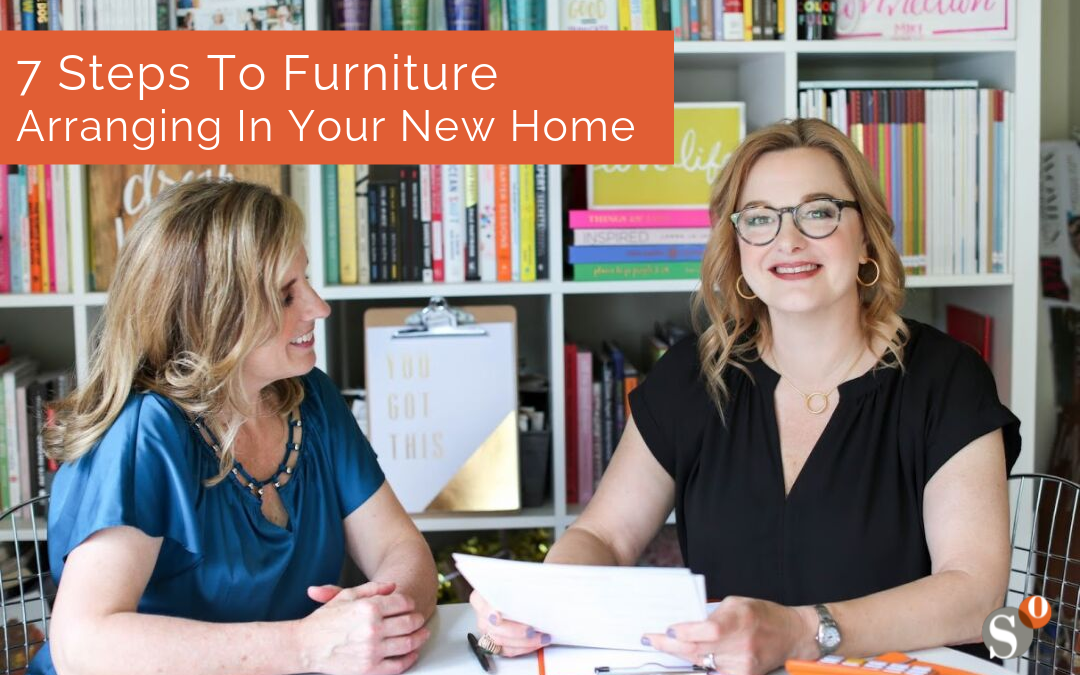
I’m guessing maybe once a year when making room for the Christmas tree. Then everything goes back to the same place, right? It’s comfortable, easy, and it works.
Furniture arrangement in a new home is a common worry for most people. Will it all fit? How do I arrange it all? What do I leave behind? What do I buy? How can I repurpose pieces?
We hit this head-on when working with our moving clients. It’s actually one of the first things we do to ease their worry and get them excited about the possibilities.
No two homes are exactly alike so don’t expect to be able to arrange your furniture in exactly the same way. In fact, we encourage you to look at this as an opportunity to use existing pieces in a new and interesting way.
How to start? If possible, we walk through both homes and talk about options. This is where I wave my arms around to suggest various furniture placements or pretend to sit in chairs or lounge on sofas. I have a mental inventory list and I’m thinking about all the options.

But what do you do if you can’t walk and talk in the physical space or if you need to know exactly what to move and how to arrange it?
Here are 7 tips:
- Identify the non-negotiable furniture items that you must have because they are useful and beautiful.
- Be open to using these pieces in new and different ways. Maybe your dining room buffet becomes a sofa table.
- Get a floor plan of your new space or sketch one by hand, being careful to note doors, windows, entryways, closets.
PRO TIP: use the real estate listing photos or video to help with the basic layout.
 Start with basic dimensions of each room (length and width) and include the wall space around doors and under windows.
Start with basic dimensions of each room (length and width) and include the wall space around doors and under windows.
PRO TIP: I prefer to work in inches since most furniture is measured in inches.
- Measure your furniture pieces (start with the biggest most important pieces) and roughly draw them into the floorplan. Does your sofa fit on the wall you’ve picked? Is there room for a side table(s)? Consider best practices as relates to flow, balance, and focal points.
- One room can have various conversation areas, multiple purposes, and eclectic furnishings. Mix and match to create a fresh arrangement combining casual and formal. Antique with modern.
- The scale is also important so even if items appear to fit on paper it’s possible they may feel too large, or conversely too small, for your new space.
Yes, in the end, it’s important to make sure it all fits, especially if you are downsizing. And, yes, people worry about mixing and matching so-called random pieces, but chances are good that everything you like and want to bring will work together in your new space with a little creativity. With a some pre-planning, your new home can be a warm and welcoming space on day one.
Happy Arranging,



